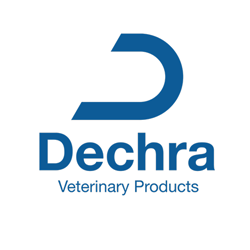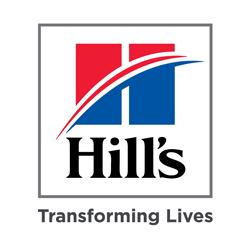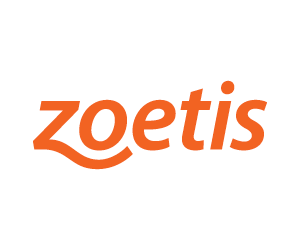References
- Flanigan J, Shepherd A, Majchrzak S, et al. US pet ownership and demographics sourcebook. Schaumburg, IL: American Veterinary Medical Association, 2007:1–3.
- Lue TW, Pantenburg DP, Crawford PM. Impact of the owner-pet and client-veterinarian bond on the care that pets receive. J Am Vet Med Assoc 2008;232:531–40.
- Volk JO, Felsted KE, Thomas JG, et al. Executive summary of the Bayer veterinary care usage study. J Am Vet Med Assoc 2011;238:1275–82.
- Bishop G, Cooney K, Cox S, et al. 2016 AAHA/IAAHPC end-of-life care guidelines. J Am Anim Hosp Assoc 2016;52:341–56.
- AAFP. 2021 AAFP End of Life Online Educational Toolkit. Available at: catvets.com/endoflife.
- Hoyumpa Vogt A, Rodan I, Brown M, et al. AAFP–AAHA feline life stage guidelines. J Feline Med Surg 2010;12:43–54.
- Stone AE, Brummet GO, Carozza EM, et al. 2020 AAHA/AAFP feline vaccination guidelines. J Feline Med Surg 2020;22:813–30.
- Rodan I, Sundahl E, Carney H, et al. AAFP and ISFM feline-friendly handling guidelines. J Feline Med Surg 2011;13:364–75.
- Carney HC, Little S, Brownlee-Tomasso D, et al. AAFP and ISFM felinefriendly nursing care guidelines. J Feline Med Surg 2012;14:337–49.
- AAFP. AAFP Cat Friendly Certificate Program. Available at: catvets.com/ certificate.
- AAFP. AAFP Cat Friendly Practices. Available at: catvets.com/cfp.
- Pittari J, Rodan I, Beekman G, et al. American Association of Feline Practitioners. Senior care guidelines. J Feline Med Surg 2009;11:763–78.
- AAFP Position Statement. Early spay and castration. Available at: catvets. com/public/PDFs/PositionStatements/ EarlySpay&Neuter.pdf.
- AAFP. Client brochures for cat owners. How do I know if my cat is in pain? Available at: https://catvets.com/guidelines/client-brochures.
- Gough A, Thomas A, O’Neill D. Part II: cat breeds. In: Gough A, Thomas A, O’Neill D, eds. Breed predispositions to disease in dogs and cats. 3rd ed. Chichester (UK): John Wiley & Sons; 2018:225–55.
- Hosie MJ, Addie DD, Boucraut-Baralon C, et al. Matrix vaccination guidelines: 2015 ABCD recommendations for indoor/outdoor cats, rescue shelter cats and breeding catteries. J Feline Med Surg 2015;17:583–7.
- Lappin MR, Elston T, Evans L, et al. 2019 AAFP feline zoonoses guidelines. J Feline Med Surg 2019;21:1008–21.
- Little S, Levy J, Hartmann K, et al. 2020 AAFP feline retrovirus testing and management guidelines. J Feline Med Surg 2020;22:5–30.
- Sadek T, Hamper B, Horwitz D, et al. Feline feeding programs: addressing behavioral needs to improve feline health and wellbeing. J Feline Med Surg 2018;20:1049–55. AAFP Consensus Statement available at: catvets.com/guidelines/practice-guidelines/how-to-feed.
- AAHA. Body condition scoring (BCS) systems. Available at: http:// aaha.org/globalassets/02-guidelines/weight management/ weightmgmt_bodyconditionscoring.pdf.
- Whyte A, Gracia A, Bonastre C, et al. Oral disease and microbiota in free-roaming cats. Top Companion Anim Med 2017;32:91–5.
- Whyte A, Lacasta S, Whyte J, et al. Tooth resorption in Spanish domestic cats: preliminary data. Top Companion Anim Med 2020;38: 100369. DOI: 10.1016/j.tcam.2019.100369.
- Bennett D, Ariffin SMZ, Johnston P. Osteoarthritis in the cat: how common is it and how easy to recognise? J Feline Med Surg 2012;14:65–75.
- AAHA. 2010 AAHA nutritional assessment guidelines for dogs and cats. Available at: aaha.org/aaha-guidelines/nutritional-assessment-configuration/ nutritional-assessment-introduction/.
- Purina. Fecal Scoring Chart. Available at: https://www.proplanveterinarydiets.ca/ wp-content/uploads/2018/05/180107_PPPVD-Fecal-Scoring-Chart-UPDATE- EN-FINAL.pdf.
- Royal Canin. Fecal Scoring System for Cats. 2020. Available at: https:// royalcanin-us.my.salesforce.com/sfc/p/j0000001rD9A /a/5b000000QMW8/ 8FRFiG8lTxRVN0rrLvXHrb9shSxH3cqoC.XA .ltJj2s.
- Rozanski E. Feline lower airway disease. In: Little S, ed. August’s consultations in feline internal medicine. 7th ed. St. Louis (MO): Elsevier; 2016:447–51.
- Epstein ME, Rodan I, Griffenhagen G, et al. 2015 AAHA/AAFP pain management guidelines for dogs and cats. J Feline Med Surg 2015;17:251–72.
- Taylor SS, Sparkes AH, Briscoe K, et al. ISFM consensus guidelines on the diagnosis and management of hypertension in cats. J Feline Med Surg 2017;19:288–303.
- J, Scott EM, Calvo G, et al. Definitive Glasgow acute pain scale for cats: validation and intervention level. Vet Rec 2017;180:449.
- Kunder D, Foster J. Cutaneous manifestations of internal disease. In: Little S, ed. August’s consultations in feline internal medicine. 7th ed. St. Louis (MO): Elsevier; 2016:282–94.
- Hammerle M, Horst C, Levine E, et al. 2015 AAHA canine and feline behavior management guidelines. J Am Anim Hosp Assoc 2015;51:205– 21. Available at: https://www.aaha.org/behavior.
- Carney HC, Sadek TP, Curtis TM, et al. AAFP and ISFM guidelines for diagnosing and solving house-soiling behavior in cats. J Feline Med Surg 2014;16:579–98.
- Casey RA, Vandenbussche S, Bradshaw JWS, et al. Reasons for relinquishment and return of domestic cats (Felis silvestris catus) to rescue shelters in the UK. Anthrozoos 2009;22:347–58.
- Overall KL, Rodan I, Beaver B, et al. Feline behavior guidelines from the American Association of Feline Practitioners. 2004. Available at: catvets.com/ public/PDFs/PracticeGuidelines/ FelineBehaviorGLS.pdf.
- Estes RD. The behavior guide to African mammals. Berkeley (CA): University of California Press; 1991:349–57.
- Landsberg G, Hunthausen W, Ackerman L. Feline development. In: Behavior problems of the dog and cat. 3rd ed. Saunders, Elsevier; 2013:20–3.
- Ellis SLH, Rodan I, Carney HC, et al. AAFP and ISFM feline environmental needs guidelines. J Feline Med Surg 2013;15:219–30.
- AVMA. AVMA pet ownership and demographics sourcebook. 2017–2018 edition. Executive summary available at: https://www.avma.org/sites/ default/files/resources/AVMA-Pet-Demographics-Executive-Summary.pdf.
- Elzerman AL, DePorter TL, Beck A, et al. Conflict and affiliative behavior frequency between cats in multi-cat households: a survey-based study. J Feline Med Surg 2020;22:705–17.
- Bradshaw J. What is a cat, and why can cats become distressed? In: Sparkes A, Ellis S, eds. ISFM guide to feline stress and health: managing negative emotions to improve feline health and wellbeing. Tisbury (UK): ISFM; 2016:19–30.
- Overall KL. Manual of clinical behavioral medicine for dogs and cats. St. Louis (MO): Elsevier; 2013.
- Turner D, Bateson P. The domestic cat: the biology of its behavior. 2nd ed. Cambridge (UK): Cambridge University Press; 2008:13–7.
- Reisner IR, Houpt KA, Erb HN, et al. Friendliness to humans and defensive aggression in cats: the influence of handling and paternity. Physiol Behav 1994;55:1119–24.
- Rodan I, Heath S. Feline behavioral health and welfare. St. Louis (MO): Elsevier; 2016:331.
- Collard RR. Fear of strangers and play behavior in kittens with varied social experience. Child Dev 1967;38:877–91.
- Caro TM. Predatory behaviour and social play in kittens. Behaviour 1981;76:1–24.
- Humphrey T, Proops L, Forman J, et al. The role of cat eye narrowing movements in cat–human communication. Sci Rep 2020;10:16503. DOI: 10.1038/s41598-020-73426-0.
- Yin S. Low stress handling, restraint and behavior modification of dogs and cats. Davis (CA): CattleDog Publishing; 2009:422.
- Koch CS. Teaching your pet to take medication. Available at: https:// www.lincolnlandac.com/sites/site-1900/documents/Medicating%20your% 20pet2.10.14.pdf.
- AAFP. Claw counseling: helping clients live alongside cats with claws. Available at: catvets.com/public/ PDFs/PositionStatements/ Scratching/Claw- Counseling.pdf.
- Wilson C, Bain M, DePorter T, et al. Owner observations regarding cat scratching behavior: an internet-based survey. J Feline Med Surg 2016;18:791–7.
- AAFP. Claw Friendly Educational Toolkit. Available at: catvets.com/ clawfriendly
- Hart BL, Barrett RE. Effects of castration on fighting, roaming and urine spraying in adult male cats. J Am Vet Med Assoc 1973;163:290–2.
- Borchelt PL. Cat elimination behavior problems. Vet Clin North Am Small Anim Pract 1991;21:257–64.
- Nielson J. Thinking outside the box: feline elimination. J Feline Med Surg 2004;6:5–11.
- Neilson JC. The latest scoop on litter. Vet Med 2009;104:140–4. Available at: www.dvm360.com/view/latest-scoop-litter.
- Horwitz DF. Behavioral and environmental factors associated with elimination behavior problems in cats: a retrospective study. Appl Anim Behav Sci 1997;52:129–37.
- AAFP Position Statement. Impact of lifestyle choice on the companion cat: indoor vs outdoor. 2016. Available at: catvets.com/public/PDFs/ Content/Preview/ LifestyleChoicePositionStatement.pdf.
- Buffington CAT. External and internal influences on disease risk in cats. J Am Vet Med Assoc 2002;220:994–1002. Available at: https://avmajournals. avma.org/doi/abs/10.2460/javma.2002.220.994.
- Rochlitz I. A review of the housing requirements of domestic cats (Felis silvestris catus) kept in the home. Appl Anim Behav Sci 2005;93:97–109.
- Clancy EA, Moore AS, Bertone ER. Evaluation of cat and owner characteristics and their relationships to outdoor access of owned cats. J Am Vet Med Assoc 2003;222:1541–5.
- Neville PF. An ethical viewpoint: the role of veterinarians and behaviourists in ensuring good husbandry for cats. J Feline Med Surg 2004;6:43–8.
- Toribio JLM, Norris JM, White JD, et al. Demographics and husbandry of pet cats living in Sydney, Australia: results of cross-sectional survey of pet ownership. J Feline Med Surg 2009;11:449–61.
- Rochlitz I. The welfare of cats. Dordrecht (Netherlands): Springer; 2005.
- Clarke DL, Wrigglesworth D, Holmes K, et al. Using environmental enrichment and feeding enrichment to facilitate feline weight loss. J Anim Physiol Anim Nutr (Berl) 2005;89:427. DOI: 10.1111/j.1439- 0396.2005.00611_1.x.
- AAFP Position Statement: Positive reinforcement for cats. 2012. Available at: catvets.com/public/ PDFs/PositionStatements/ PositiveReinforcement.pdf.
- DePorter TL. Use of pheromones in feline practice. In: Rodan I, Heath S, eds. Feline behavioral health and welfare. St. Louis (MO): Elsevier; 2015:235–44.
- Griffith CA, Steigerwald ES, Buffington CA. Effects of synthetic facial pheromone on behavior of cats. J Am Vet Med Assoc 2000;217:1154–6.
- Stevens BJ, Frantz EM, Orlando JM, et al. Efficacy of a single dose of trazodone hydrochloride given to cats prior to veterinary visits to reduce signs of transport- and examination-related anxiety. J Am Vet Med Assoc 2016;249:202–8.
- van Haaften KA, Eichstadt Forsythe LR, Stelow EA, et al. Effects of a single preappointment dose of gabapentin on signs of stress in cats during transportation and veterinary examination. J Am Vet Med Assoc 2017;251:1175–81.
- Lascelles BDX, Henry JB 3rd, Brown J, et al. Cross-sectional study of the prevalence of radiographic degenerative joint disease in domesticated cats. Vet Surg 2010;39:535–44.
- Gerard AF, Larson M, Baldwin CJ, et al. Telephone survey to investigate relationships between onychectomy or onychectomy technique and house soiling in cats. J Am Vet Med Assoc 2016;249:638–43.
- Ellis JJ, McGowan RTS, Martin F. Does previous use affect litter box appeal in multi-cat households? Behav Processes 2017;141:284–90.
- Guy NC, Hopson M, Vanderstichel R. Litterbox size preference in domestic cats (Felis catus). J Vet Behav 2014;9:78–82.
- Grigg EK, Pick L, Nibblett B. Litter box preference in domestic cats: covered versus uncovered. J Feline Med Surg 2013;15:280–4.
- Horwitz DF. Common feline problem behaviors: urine spraying. J Feline Med Surg 2019;21:209–19.
- Cafazzo S, Bonanni R, Natoli E. Neutering effects on social behaviour of urban unowned free-roaming domestic cats. Animals (Basel) 2019;9. DOI: 10.3390/ani9121105.
- Buffington CA, Chew DJ, Kendall MS, et al. Clinical evaluation of cats with nonobstructive urinary tract diseases. J Am Vet Med Assoc 1997; 210:46–50.
- Buffington CAT, Westropp JL, Chew DJ, et al. Clinical evaluation of multimodal environmental modification (MEMO) in the management of cats with idiopathic cystitis. J Feline Med Surg 2006;8:261–8.
- Westropp JL, Buffington CAT. Feline idiopathic cystitis: current understanding of pathophysiology and management. Vet Clin North Am Small Anim Pract 2004;34:1043–55.
- Bradshaw JWS. The evolutionary basis for the feeding behavior of domestic dogs (Canis familiaris) and cats (Felis catus). J Nutr 2006; 136(suppl 7):1927S–31S.
- Morris JG. Idiosyncratic nutrient requirements of cats appear to be diet-induced evolutionary adaptations. Nutr Res Rev 2002;15:153–68.
- AAHA. Raw protein diet. 2011. Available at: https://www.aaha.org/ about-aaha/aaha-position-statements/raw-protein-diet/.
- Freeman L, Becvarova I, Cave N, et al. WSAVA nutritional assessment guidelines. J Feline Med Surg 2011;13:516–25. Also available at: https:// wsava.org/wp-content/uploads/2020/01/WSAVA-Nutrition-Assessment- Guidelines-2011-JSAP.pdf.
- Stasiak M. The development of food preferences in cats: the new direction. Nutr Neurosci 2002;5:221–8.
- Turner DC. The human-cat relationship. In: Turner DC, Bateson P, eds. The domestic cat: the biology of its behaviour. 2nd ed. Cambridge (UK): Cambridge University Press; 2008:194–206.
- Masserman JH. Experimental neuroses. Sci Am 1950;182:38.
- Fascetti AJ, Delaney SJ, eds. Applied veterinary clinical nutrition. Chichester (UK): John Wiley & Sons; 2012.
- Wichert B, Muller L, Gebert S, et al. Additional data on energy requirements of young adult cats measured by indirect calorimetry. J Anim Physiol Anim Nutr (Berl) 2007;91:278–81.
- Laflamme D. Development and validation of a body condition score system for cats: a clinical tool. Feline Pract 1997;25:13–8.
- Teng KT, McGreevy PD, Toribio J-A, et al. Strong associations of ninepoint body condition scoring with survival and lifespan in cats. J Feline Med Surg 2018;20:1110–8.
- Lund EM, Armstrong PJ, Kirk CK. Prevalence and risk factors for obesity in adult cats from private US veterinary practices. Int J Appl Res Vet Med 2005;3:88–96.
- Scarlett JM, Donohue S. Associations between body condition and disease in cats. J Am Vet Med Assoc 1998; 212: 1725–1731.
- Segev G, Livne H, Ranen E, et al. Urethral obstruction in cats: predisposing factors, clinical, clinicopathological characteristics and prognosis. J Feline Med Surg 2011;13:101–8.
- Scarlett JM, Donoghue S, Saidla J, et al. Overweight cats: prevalence and risk factors. Int J Obes Relat Metab Disord 1994;18(suppl 1):S22–8.
- Courcier EA, Mellor DJ, Pendlebury E, et al. An investigation into the epidemiology of feline obesity in Great Britain: results of a crosssectional study of 47 companion animal practises. Vet Rec 2012;171:560. DOI: 10.1136/vr.100953.
- Baldwin K, Barges J, Buffington T, et al. AAHA nutritional assessment guidelines for dogs and cats. J Am Anim Hosp Assoc 2010;46:285–96. Also available at: https://www.aaha.org/globalassets/02-guidelines/nutritional- assessment/nutritionalassessmentguidelines.pdf.
- National Research Council. Nutrient requirements of dogs and cats. Washington DC: National Academies Press; 2006.
- Thatcher CD, Hand MS, Remillard RL. Small animal clinical nutrition: an iterative process. In: Hand MS, Thatcher CD, Remillard RL, et al., eds. Small animal clinical nutrition. 5th ed. Topeka (KS):MarkMorris Institute; 2010:3–21. Available at: https://s3.amazonaws.com/mmi_sacn5/2019/ SACN5_1.pdf.
- Miele A, Sordo L, Gunn-Moore DA. Feline aging: promoting physiologic and emotional well-being. Vet Clin North Am Small Anim Pract 2020;50:719–48.
- Laflamme DP. Nutrition for aging cats and dogs and the importance of body condition. Vet Clin North Am Small Anim Pract 2005;35:713–42.
- Harper EJ. Changing perspectives on aging and energy requirements: aging, body weight and body composition in humans, dogs and cats. J Nutr 1998;128(suppl 12):2627S–31S.
- Cupp C, Perez-Camargo G, Patil A, et al. Long-term food consumption and body weight changes in a controlled population of geriatric cats [abstract]. Compend Contin Educ Pract Vet 2004;26(suppl):60.
- Laflamme D. Effect of diet on loss and preservation of lean body mass in aging dogs and cats. In: Proceedings of the Companion Animal Nutrition Summit; May 3–5, 2018; Charleston, SC. pp 41–6.
- Hall JA, MacLeay J, Yerramilli M, et al. Positive impact of nutritional interventions on serum symmetric dimethylarginine and creatinine concentrations in client-owned geriatric cats. PLOS One 2016;11: e0153654. DOI: 10.1371/journal.pone.0153654.
- Bellows J, Berg ML, Dennis S, et al. 2019 AAHA dental care guidelines for dogs and cats. J Am Anim Hosp Assoc 2019;55:49–69. Available at: https://www.aaha.org/globalassets/02-guidelines/dental/aaha_dental_ guidelines.pdf.
- Milella L. Occlusion and malocclusion in the cat – what’s normal, what’s not and when’s the best time to intervene? J Feline Med Surg 2015;17:5–20.
- Veterinary Oral Health Council. VOHC Accepted Products for Cats. Available at: http://www.vohc.org/ VOHCAcceptedProductsTable_Cats.pdf. Updated March 2020.
- AAFP. Cat Friendly Homes. How to care for your cat’s teeth. Available at: https://catfriendly.com/cat-care-at-home/routine-caregrooming/care-catsteeth.
- AAFP. Cat Friendly Homes. How to brush your cat’s teeth. Available at: https://catfriendly.com/cat-care-at-home/routine-caregrooming/how-tobrush-your-cats-teeth.
- Bellows J, Center S, Daristotle L, et al. Aging in cats: common physical and functional changes. J Feline Med Surg 2016;18:533–50.
- Gorrel C, Inskeep G, Inskeep T. Benefits of a ‘dental hygiene chew’ on the periodontal health of cats. J Vet Dent 1998;15:135–8.
- Logan EI, Berg ML, Coffman L, et al. Dietary control of feline gingivitis: results of a six-month study. In: Proceedings of the 13th Annual Veterinary Dental Forum; October 21–24, 1999; Baltimore, MD.
- Clarke DE, Caiafa A. Oral examination in the cat: a systematic approach. J Feline Med Surg 2014;16:873–86.
- Perry R, Tutt C. Peridontal disease in cats: back to basics – with an eye on the future. J Feline Med Surg 2015;17:45–65.
- American Veterinary Dental College. Position statement. Companion animal dental scaling without anesthesia. 2004. Available at: https:// avdc.org/?s=Dental+scaling+without+anesthesia.
- American Veterinary Dental College. Anesthesia free dentistry: know the facts. Available at: http://avdc.org/AFD/.
- Burns K. Below the surface of anesthesia-free dentistry. J Am Vet Med Assoc 2016;248:242–58. Available at: https://www.avma.org/javma-news/ 2016-02-01/below-surface-anesthesia-free-dentistry.
- Companion Animal Parasite Council. CAPC Guidelines. Available at: http://capcvet.org/guidelines.
- AAFP. Cat Friendly Homes. Keep your cat healthy – parasite prevention. Available at: https://catfriendly.com/keep-your-cat-healthy/parasite-prevention.
- Coin G. After 4 painful years, CNY woman’s mystery illness finally traced to rare tick-borne bacteria. Syracuse.com. Available at: https:// www.syracuse.com/health/2019/12/after-four-painful-years-a-cny-womansmystery-illness-finally-solved.html.
- Sonenshine DE. Range expansion of tick disease vectors in North America: implications for spread of tick-borne disease. Int J Environ Res Public Health 2018;15:E478. DOI: 10.3390/ijerph15030478.
- TVP. The state of heartworm incidence in the U.S. Today’s Veterinary Practice. Available at: https://todaysveterinarypractice.com/the-state-ofheartworm-incidence-in-the-united-states/.
- American Heartworm Society. Current feline guidelines for the prevention, diagnosis, and management of heartworm (Dirofilaria immitis) infection in cats. 2014. Available at: American Heartworm Society. 2014 AHS Feline Guidelines. Available at: https://d3ft8sckhnqim2.cloudfront.net/images/ pdf/2014-AHS-Feline-Guidelines.pdf?1425399092.
- 126. Day MJ, Horzinek MC, Schultz RD, et al. WSAVA guidelines for the vaccination of dogs and cats. J Small Anim Pract 2016;57:E1–45. Available at: https://wsava.org/wp-content/uploads/2020/01/WSAVAVaccination- Guidelines-2015.pdf.
- Vaccine-Associated Feline Sarcoma Task Force. The current understanding and management of vaccine-associated sarcomas in cats. J Am Vet Med Assoc 2005;226:1821–42.
- CDC. Healthy pets, healthy people. Centers for Disease Control and Prevention. Available at: https://www.cdc.gov/healthypets/index.html.
- Stull JW, Bjorvik E, Bub J, et al. 2018 AAHA infection control, prevention, and biosecurity guidelines. J Am Anim Hosp Assoc 2018;54: 297–326. Available at: https://www.aaha.org/biosecurity.
- van Bree FPJ, Bokken GCAM, Mineur R, et al. Zoonotic bacteria and parasites found in raw meat-based diets for cats and dogs. Vet Rec 2018; 182:50. DOI: 10.1136/vr.104535.
- Carney HC, Ward CR, Bailey SJ, et al. 2016 AAFP guidelines for the management of feline hyperthyroidism. J Feline Med Surg 2016;18:400–16.
- Sparkes AH, Caney S, Chalhoub S, et al. ISFM consensus guidelines on the diagnosis and management of feline chronic kidney disease. J Feline Med Surg 2016;18:219–39.
- Behrend E, Holford A, Lathan P, et al. 2018 AAHA diabetes management guidelines for dogs and cats. J Am Anim Hosp Assoc 2018;54:1–21. Available at: https://www.aaha.org/diabetes.
- AAFP. 2019 Diabetes Educational Toolkit. Available at: catvets.com/diabetes.
- Sparkes AH, Cannon M, Church D, et al. ISFM consensus guidelines on the practical management of diabetes mellitus in cats. J Feline Med Surg 2015; 17: 235–250.
- AAFP. 2021 Hypertension Educational Toolkit. Available at: catvets.com/ hypertension.
- Acierno MJ, Brown S, Coleman AE, et al. ACVIM consensus statement: guidelines for the identification, evaluation, and management of systemic hypertension in dogs and cats. J Vet Intern Med 2018;32: 1803–22.
- Fox PR, Rush JE, Reynolds CA, et al. Multicenter evaluation of plasma N-terminal probrain natriuretic peptide (NT-pro BNP) as a biochemical screening test for asymptomatic (occult) cardiomyopathy in cats. J Vet Intern Med 2011;25:1010–6.
Boehringer Ingelheim Animal Health USA Inc., CareCredit, Dechra Veterinary Products, Hill's Pet Nutrition, Inc., IDEXX Laboratories, Inc., Merck Animal Health, and Zoetis Petcare supported the development of the 2021 AAHA/AAFP Feline Life Stage Guidelines and resources through an educational grant to AAHA










